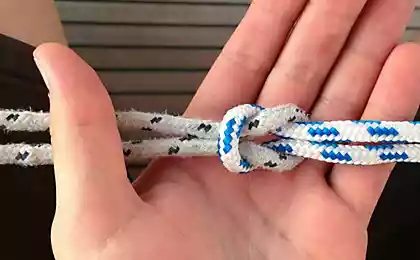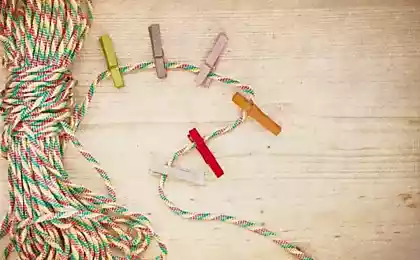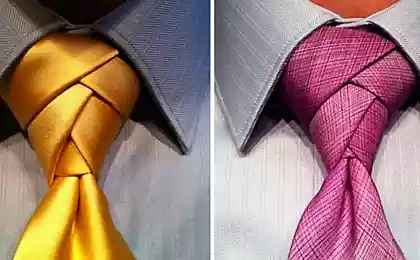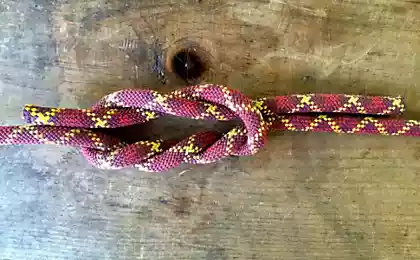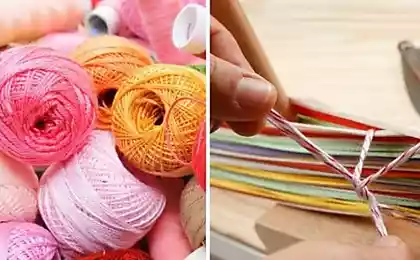914
TIBETAN KNOT INFINITY
Node refers to the most ancient magic symbol. This dual nature of it: has a special meaning as the tying unit, and the process of unleashing. And the first is associated with the seizure, the involvement of anything, and the second - to release himself node is able to store energy or idea.
According to the method of the Vajrayana, Infinity Knot is a symbol of karmic consequences (a kind of universal validity). Any action will have consequences. Untangling the knot at one end, becomes entangled in another. Ie our actions are good or bad, sooner or later all the same impact on us.
The very form of this symbol indicates the degeneration of man and his karmic connections with the world and the universe. Tibetan endless knot represents the fickle nature of time, impermanence and interconnectedness of all things in nature, as well as the unity of wisdom and compassion.
How to weave knot infinity
Node is rather complicated, so learn the circuit before starting to spin. (See. Figure chart)
1. Take the thread length of 3m. So kill it on the cushion of the middle, each of the ends form the loop (see. Fig. 1, vertical loops), kill it.
2. Take the right end of the thread, make a long loop of it and pass it to all vertical loops that were formed in the previous step. The loop will go through each of them according to the "under-thread over the thread" (see. The same Figure 1). Kill it. Now make another long loop of the same thread it through the vertical loop as the first, kill it.
3. Now take the left end, and conducting it in the top of the unit, obvivaya all the threads running vertically, except the extreme right-ear loop. In this first pass the thread loops over and then under them (see. Figure 2). Stabs. Once again we start the same thread to the right (left in this case formed by a loop), and repeat the same in the bottom of the assembly.
4. Now we need to go further left end of the thread in the vertical assembly
The main principle to remember in this case:
when the thread goes up, it passes under one thread over 3 again at 1, and again over three yarns, and when the thread goes down, it passes under two, over 1, under 3, over one and under one thread.
Remember for yourself this sequence ("under one-on three-by-one over the three-and-down at two-over-one at three-over-under"), it will simplify the matter.
1 - 3 - 1 - 3 - 2 - 1 - 3 - 1 - 1
5. Carefully tighten the knot for external loops and loose ends. It remains only to align the size of the petals, the relevant portions of the thread pulling (go from the middle of the node in turn in different directions).
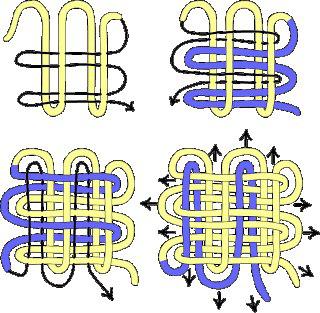
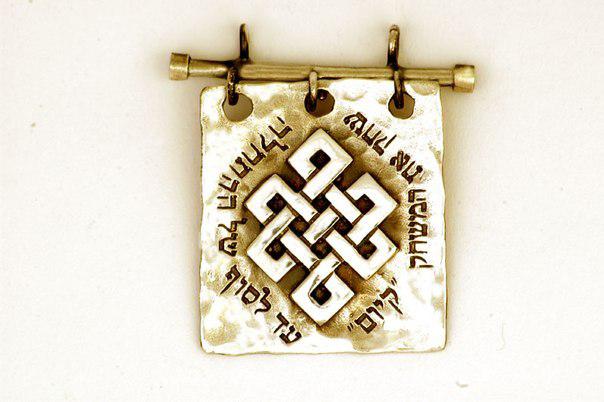
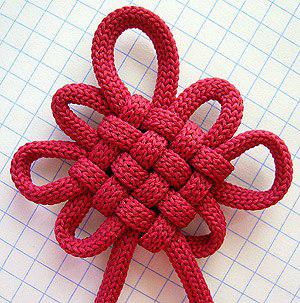
According to the method of the Vajrayana, Infinity Knot is a symbol of karmic consequences (a kind of universal validity). Any action will have consequences. Untangling the knot at one end, becomes entangled in another. Ie our actions are good or bad, sooner or later all the same impact on us.
The very form of this symbol indicates the degeneration of man and his karmic connections with the world and the universe. Tibetan endless knot represents the fickle nature of time, impermanence and interconnectedness of all things in nature, as well as the unity of wisdom and compassion.
How to weave knot infinity
Node is rather complicated, so learn the circuit before starting to spin. (See. Figure chart)
1. Take the thread length of 3m. So kill it on the cushion of the middle, each of the ends form the loop (see. Fig. 1, vertical loops), kill it.
2. Take the right end of the thread, make a long loop of it and pass it to all vertical loops that were formed in the previous step. The loop will go through each of them according to the "under-thread over the thread" (see. The same Figure 1). Kill it. Now make another long loop of the same thread it through the vertical loop as the first, kill it.
3. Now take the left end, and conducting it in the top of the unit, obvivaya all the threads running vertically, except the extreme right-ear loop. In this first pass the thread loops over and then under them (see. Figure 2). Stabs. Once again we start the same thread to the right (left in this case formed by a loop), and repeat the same in the bottom of the assembly.
4. Now we need to go further left end of the thread in the vertical assembly
The main principle to remember in this case:
when the thread goes up, it passes under one thread over 3 again at 1, and again over three yarns, and when the thread goes down, it passes under two, over 1, under 3, over one and under one thread.
Remember for yourself this sequence ("under one-on three-by-one over the three-and-down at two-over-one at three-over-under"), it will simplify the matter.
1 - 3 - 1 - 3 - 2 - 1 - 3 - 1 - 1
5. Carefully tighten the knot for external loops and loose ends. It remains only to align the size of the petals, the relevant portions of the thread pulling (go from the middle of the node in turn in different directions).



Three stages of development of any service or general at McDonalds and IBM Watson
How to build a BEAUTIFUL PRESS

